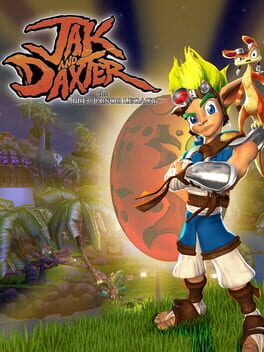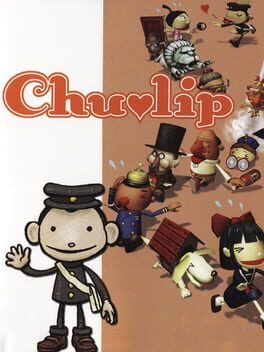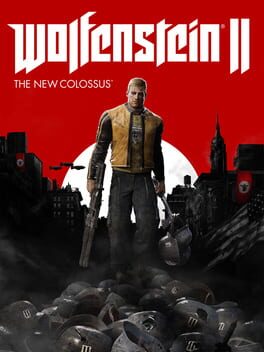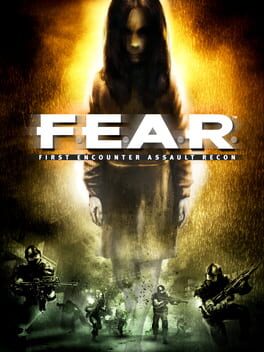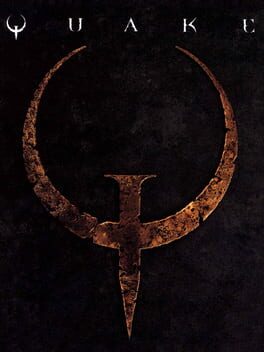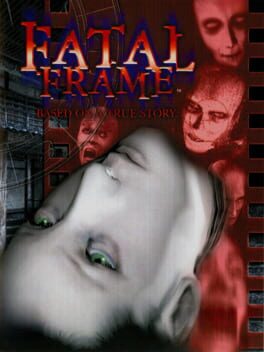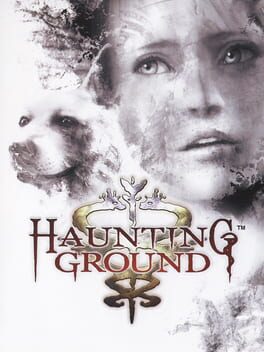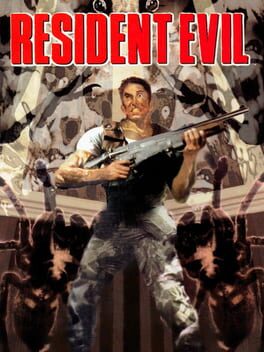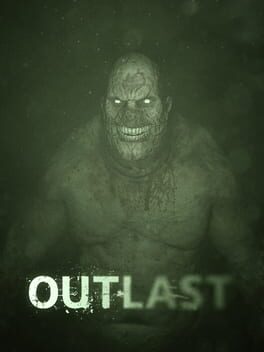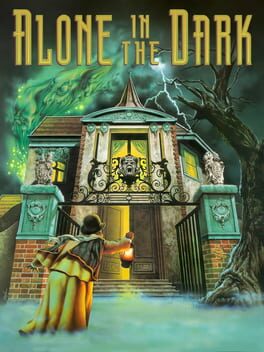The only thing I knew about Jak and Daxter going in was that it was developed by Naughty Dog, a team who has become famous for their story-focused games, so I was expecting it to be the narrative practice that turned the Crash Bandicoot team into the people who would make The Last of Us. As it turns out, the grim atmosphere and violence I was picturing when I thought of Jak and Daxter started with the second game, and this one is exclusively a lighthearted fantasy platformer. It shocked me just how simple this game is, following the most basic template of 3D platforming. Your goal is to collect power cells, which are scattered around the world or earned by completing simple objectives. You need to get a certain amount before progressing to the next set of levels, where you’re presented with a new number to get, and your search starts over again. If this sounds like Mario 64, it’s because that’s what it is in everything but name. You don’t collect power stars, you collect power cells. You don’t collect 100 coins for a star, you collect 90 orbs for a cell. You don’t collect 8 red coins, you collect 7 scout flies. You don’t need 70 power macguffins to beat the game, you need 72. The quest hubs are also the default set (grassland/desert/ocean/jungle/ice/fire/boss) with only a couple exceptions. This all sounds pretty dismissive, so I want to emphasize that Jak and Daxter isn’t a bad 3D platformer, it’s simply an unambitious one. If you played this game without the context of Naughty Dog’s legacy and how the series went on to greater ambitions, you would probably dismiss it as a run of the mill attempt to capitalize on the genre’s popularity. Having no load times between zones may have been enough to differentiate it back in 2001, but there isn’t enough to make it stand out today.
2002
I completely missed the boat when it came to mascot platformers in the early 2000’s. I only owned a Gamecube and I never bought Mario Sunshine, instead spending all my time in 007 Nightfire and Custom Robo. So, I had no Crash, no Banjo, no Spyro, no Mario, no Jak, no Ratchet. My assumption going into Ratchet & Clank was that it gets recommended due to its nostalgia factor, given that it seemed like a fairly standard 3D platformer with an outdated sense of violent edginess. This just proves how idiotic assumptions and first impressions can be, because this game rips. Even with zero nostalgia for the series and the genre as a whole, Ratchet & Clank is incredibly charming. The writing is witty and concise, the worn-out mechanical aesthetic feels original even ~20 years later, the soundtrack is now one of my favorites, and the weapon selection is surprisingly interesting. It starts out pretty simply, but the difficulty hits a sweet spot halfway through where you start needing to have all your tools at the ready if you don’t want to get beat up ten times in a row. The last boss in particular was a perfect crescendo of difficulty and narrative stakes that I wasn’t expecting a mascot platformer could pull off. Don’t miss out on it, I’m definitely going to slowly work my way through the sequels until I get tired of it.
2002
With games like the original Super Mario Bros. and Doom I’ve kept reviews short; you already know about them and should just play them already. For Chulip, I’m going to do it for the opposite reason. Chances are, you have no idea what this game is about. You probably don’t even know what system it’s for. And that’s why you should find a copy of it (it’s for the PS2, by the way) and play it. Go in completely blind and enjoy. I’ll add the parenthetical that figuring out how to beat the game is quite difficult, so it’s ok to quit the game once you get stuck and it’s not interesting anymore, but until that point I think you’ll have a pretty memorable experience.
No one expected Wolfenstein: The New Order to be good, and this game proves that the developers felt the same way. The New Colossus copies TNO almost beat-for-beat, as if they were unsure what exactly they got right or what was safe to change. However, the safe sequel has dangers of its own, and this game managed to run into all the usual pitfalls. Not only is the plot almost the same, the emotional beats meant to grab your interest are nearly identical, so the story is a write-off. The gameplay is just as good as the original, but since it doesn’t exceed it in any capacity, it’s easy to see how The New Colossus is generally accepted as a downgrade. That doesn’t mean the gameplay isn’t fun, and I enjoyed it a lot, but if you’re looking for anything other than satisfying gunplay then you’re in the wrong place. It puts me in a tough spot when it comes to a recommendation, because I got my money’s worth from it and had a blast, but spending any time thinking about its other parts leaves me confused and frustrated. I suppose that boils down to telling shooter fans to pick it up when it’s cheap.
This game plays like a joke. That’s not to say it’s bad, it’s just that Doom 2 seems like it was a release of tension after the relatively straight-faced original. There are tons of ambushes, traps, gimmick levels, and funny situations that are scattered about the campaign, instead of the carefully considered structure and pacing that you may have gotten used to. In Doom, each episode required you to start with just a pistol, so the levels could slowly introduce ideas and escalate situations, resetting the stakes when the next episode started up. With one long campaign in Doom 2, it’s just a grab bag of random gimmicks until you reach the final boss. All the new monsters and funny level designs make it more fun than Doom, but not necessarily better overall. The highs are high, but the lows of getting repeatedly killed in unpredictable ambushes are incredibly low. It’s still an easy recommendation, just expect to roll your eyes a few times before the end.
2005
Dismissing games as just being good for their time can be a contentious idea. If Doom can hold up even as the father of its genre, doesn't that invalidate the idea that subsequent games should be given a pass for being dated? Of course, there is a lot more complexity to the question than that, but it does raise the point that it's difficult to judge games outside of the historical context into which they were released. F.E.A.R. received a lot of praise for its atmosphere and enemy design back in the day, but through today's lens its accomplishments seem much less impressive. The horror elements are certainly an interesting inclusion, but the way they're so disconnected from the rest of the game makes them feel like a random gimmick more than a key element. The enemy AI does make smart moves, but it's plain to see how much of it is scripted. Enemies flipping over a table to take cover seems cool until you notice how they stand behind it for no particular reason until you enter the room. However, just because something's a gimmick doesn't mean it can't be appreciated. Even though movies are obviously fake, it's not something you hear complaints about, because the important part is that the fictional setting stays internally consistent. In essence, playing F.E.A.R. feels like watching an old horror movie where you can tell how all the effects were done. It can be immersion breaking, but getting hung up on those details just isn't worth the time. The real question is if the shooting mechanics are still just as satisfying as intended and if the horror elements are still interesting enough to spark your imagination, and both goals are met. It's not going to be impressing anybody the way it used to, but you can still have a lot of fun with it, and that's more than a lot of games in general can say.
1996
While Doom let me have fun from the beginning, Quake took some warming up to. Doom starts you off gently with low numbers of weak enemies, but the basic enemies in Quake can tear you to shreds and require concentrated fire. Trying to play in a slow, methodical way will get you killed, even when you feel like you're not making any mistakes. Enemies seem to come from random corners, grenades are bouncing everywhere, and the levels are so complex that it can feel random and overwhelming. The key thing to realize is that while sprinting around enemies in Doom was a careless way to play, it's what you have to do just to survive in Quake. The basic enemies using powerful but slow grenades was meant to inform you that the best way to handle an enemy is to be in constant motion and maintain fire as you pass. Once you get the hang of the combat’s momentum, this game really gets amazing. The high speed mixed with enemies that demand careful reaction placed within intricate levels makes for an experience that simultaneously rewards instinctive skill and observational intelligence. As much as it’s become a video game boomer meme to say, I have to admit that Quake really does hold up beautifully.
1993
This is another case like Super Mario Bros. where I think everyone that loves games should beat it. It's so fundamental to games as a medium and still holds up so well that it's just a requirement. One tiny tip though: the final episode in most releases, “Thy Flesh Consumed” was added as a set of challenge levels in Ultimate Doom. Those levels get pretty crazy, so it’s extra credit and not part of the homework.
2019
Just as there are innumerable ways to tell a story, there are innumerable ways to internalize one. As a story is presented to an audience, it gets filtered through each person’s unique perception of the world, and it’s this adjusted view that is then consciously considered. Shakespeare’s plays are the closest thing we have to objectively good stories, but even these can have wildly different meanings to each person. This is where Disco Elysium puts a lot of faith in its audience, expecting people to confront their biases and consider alternatives in a mature way. It’s an isometric RPG where the main murder-mystery plot is almost an afterthought, with the actual purpose of the narrative being discussion of a wide range of philosophical topics, and the roleplaying is how your character sees the world. It's the only RPG I've seen that takes advantage of how a player's choices reflect back on them, and it allows the game to engage the audience on a more personal level. The game assumes that you’re interested in this sort of dialog and can entertain alternatives, playing devil’s advocate to question you for every decision. It accomplishes great things with the RPG format, but the payoff relies almost entirely on that trust in the audience’s willingness for discussion. If you want the game they give you direct plot payoff or conclusive ending, you probably won’t leave fully satisfied. If you want to engage with it as a normal RPG and learn which stats will give you the best outcome, the game won’t give you that either. The kind of person this game will pay off for is for someone who finds joy in ruminating on different ideas and reflecting on how they shape the world. If you're not that kind of person, the game won't exactly be miserable, but the energy you have to put into it won't be proportionately rewarded. But if you are, this could be one of the most interesting games you'll ever play.
2001
When reviewing Outlast, I mentioned how constant checkpoints and unlimited supplies can prevent a feeling of vulnerability that I think is important to horror games. Oddly enough, this is another survival horror game focused around using a camera, and it has the exact same design flaw. In this case, it’s how the save points scattered around the haunted mansion can be used as many times as you like and provide you with an unlimited supply of film for your ghost-exorcizing camera. While moving from room to room should be a tense experience where you’re unsure when ghosts will strike, having a HUD element to tell you when one is nearby so you can ready your infinite ammo weapon eliminates that possibility. The design of the ghosts themselves is spectacular, but this visual aspect is the only place where horror actually manifests itself. Fighting them is also a shallow and repetitive process, pointing at them until your indicator changes color and snapping the picture. The story isn't enough to rescue it either, sitting comfortably among the bog standard plots of the horror genre. There are enough good ideas here to where the potential of the sequels intrigues me, but I can say that this entry doesn’t live up to the series’ reputation.
2005
This is considered the swan song of classic survival horror, since it's the very last in Capcom's line of fixed-camera titles. It came out just a few months after Resident Evil 4 redefined the genre, so it was an attempt to correct the weaknesses of the old style so the two could coexist. However, as you could probably guess from the aforementioned finality, that plan didn’t work out. It ended up being what is essentially a clone of Clock Tower, where you play as a disempowered teenage girl navigating a mansion and avoiding pursuers as you hunt keys. There are gimmicks on the side like alchemy and bonding with a dog companion, but there’s no avoiding that 90% of the game is running from room to room looking for random items. Since the only enemies you regularly encounter are the pursuers, who are dealt with one-at-a-time in their dedicated chapters, it's weird how little horror there is in comparison to the amount of tedium. If being chased was going to be the only meaningful gameplay, it should have been more nuanced than entering contextual hiding places once you’re out of sight. It’s so simple and predictable that the parts meant to be a climax of tension end up being little more than interruptions as you try to reach the next story moment. All this game ended up accomplishing was compiling all the things people were tired of into a single package, and it was eye-opening to see why people had become so disinterested in a genre I love. I have to credit the game for giving me a new sense of understanding of survival horror history, but I definitely would have preferred a good game instead.
1996
The remake of this game is one of my favorite games of all time, but I had never actually played the original until now. All the enjoyment I got out of this game ended up coming from comparing it to the remake, because this game in itself is not very good. The key hunting gameplay that this game established felt great in the remake since it got you engaging with the atmosphere of the mansion, but the level of detail is so low in this version that the mansion just feels like a normal house. Everything is brightly lit and furniture is sparse, so it’s a trek across endless boxy rooms and encountering a minimal variety of enemies with not much else going on. In essence, it’s the ultimate barebones survival horror experience, with everything except the basic framework removed. I’ve played the other Playstation Resident Evil games and I like them a lot, so this one is falling victim to its own status as an innovator. It doesn’t hold up, but it gave us a lot of good games and spectacular remake, so I should probably let it off the hook.
2013
Polish is a quality that's hard to quantify, but Outlast is a good example of how a lack of it in key areas can bring down an entire experience. This is a survival horror game where the main resource you manage is the batteries in your night vision camera, so players should be anxious that they’ll run out and be left alone in the dark. However, with the dark sections being so dark that you can’t see at all, you receive an extremely generous supply on top of getting a free refill when you load a checkpoint. Not only does this keep you safe regardless of how poorly you play, even the people who play well can abuse the system by loading immediately after the game says it’s saving. Feelings of vulnerability won't last long when you're constantly reminded that any mistake can be corrected by a loading a checkpoint from a minute ago. You’re also constantly reminded of the controls, with text boxes popping up whenever you encounter something with contextual actions available. Little things like this kill immersion, like how there’s a crosshair in the middle of the screen even though aiming is never required. Some of this stuff can be turned off in the menu, but leaving them enabled by default means that it’ll subtly subtract from the enjoyment until players get fed up and go look for how to turn it off. With so many of these little problems and a few too many cheap jump scares, Outlast feels little more than satisfactory. It wouldn't need much change to be great, but it’s plain to see how much better it could have been with a little more thought put into it.
1992
When reviewing Eternal Darkness I mentioned how the mansion is a sacred setting for survival horror games, and when discussing Clock Tower I mentioned that horror games started way before Resident Evil. Both of those statements were allusions to Alone in the Dark, arguably the first modern-styled survival horror game. It has all the same key hunting, puzzle solving, and limited supplies, along with a few other inclusions that were way ahead of its time. In particular, it told the story through notes and books around the mansion rather than directly stating it, which seems like a trend that only started catching on after Bioshock did it fifteen years later. If you're interested in playing historical games then you'll be delighted by this one, but on the other hand, the technology is so painfully dated that I don't think it'll impress you on any level other than how influential it was. It's a neat game to visit, but not one that can be recommended strictly on its own merits anymore.
1985
